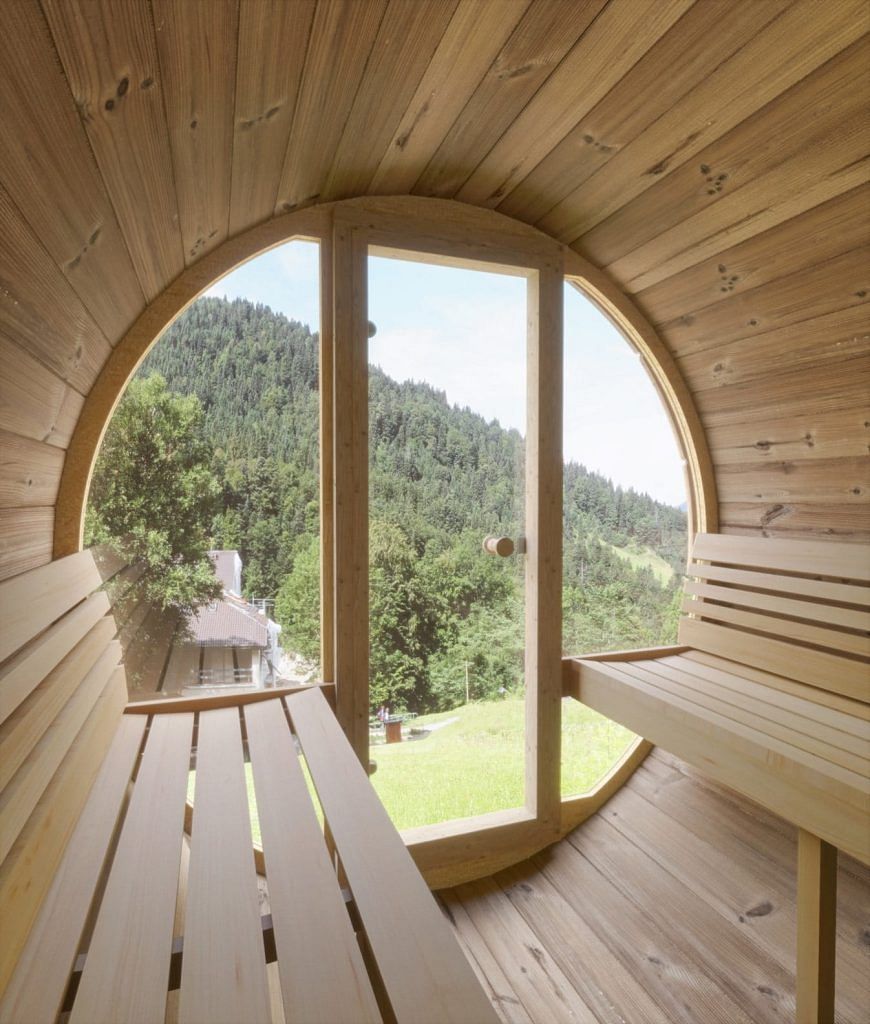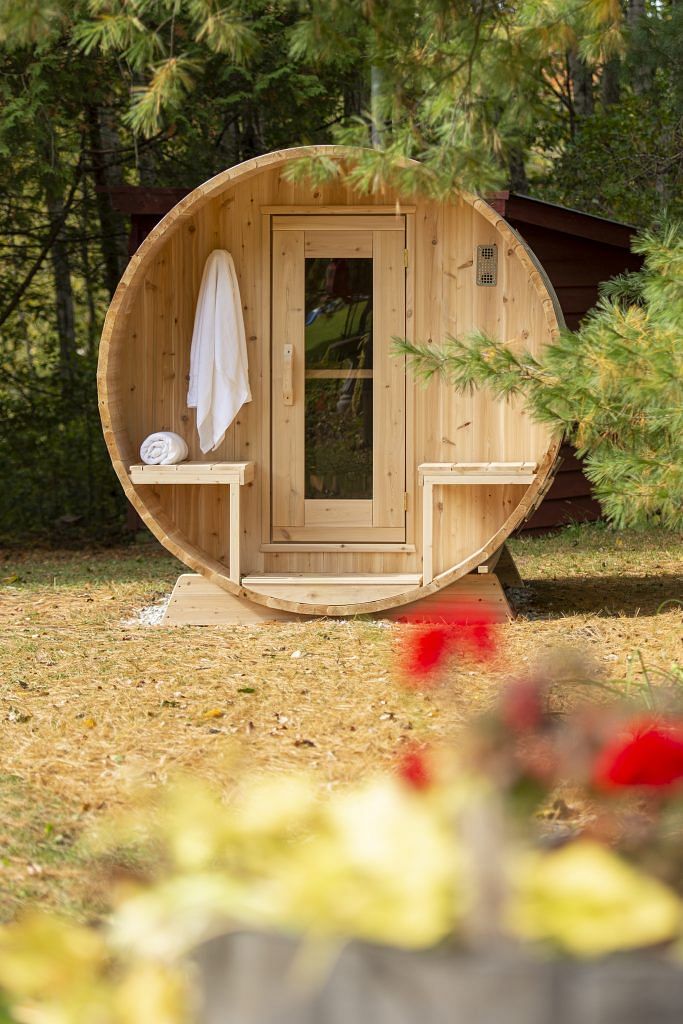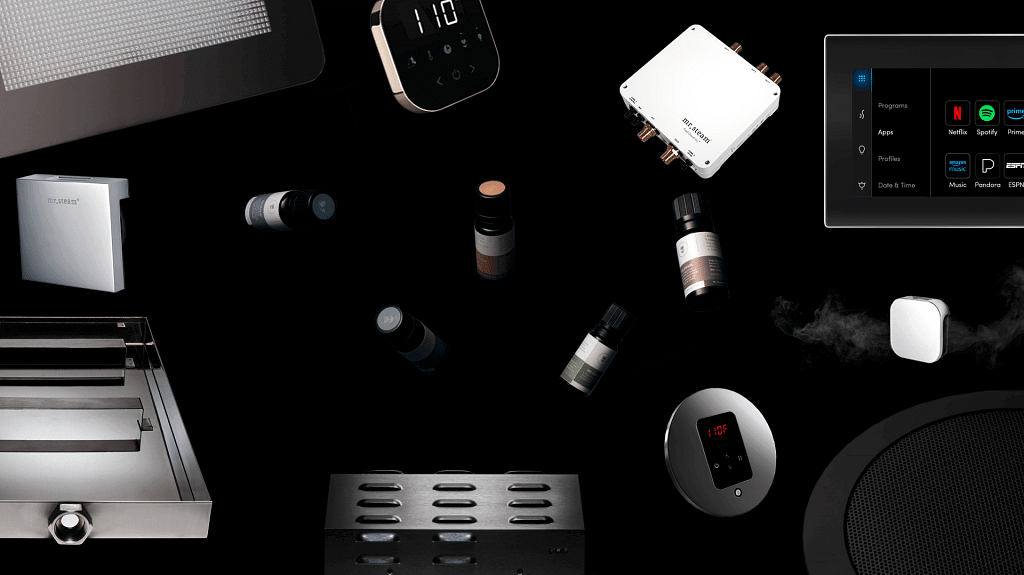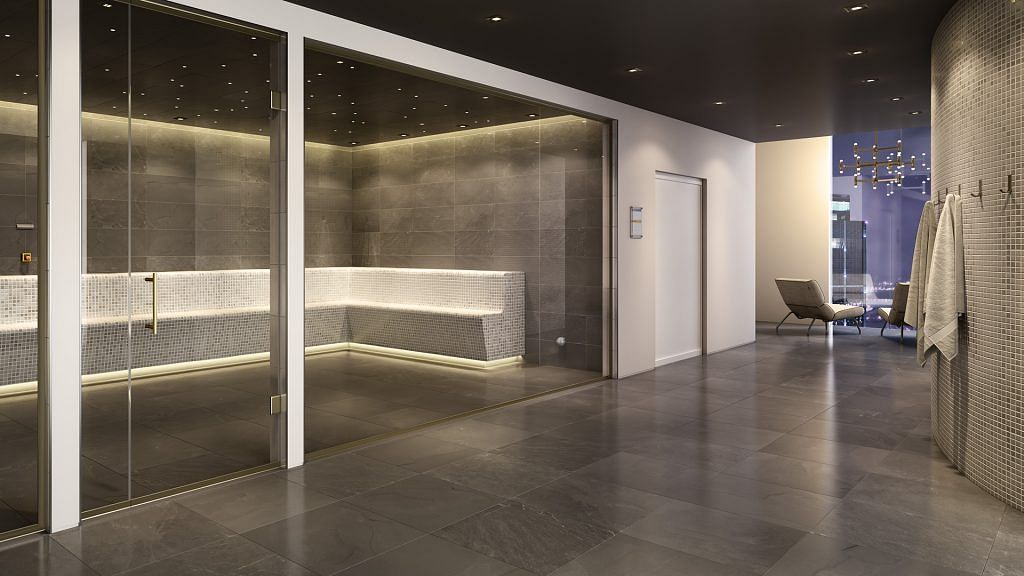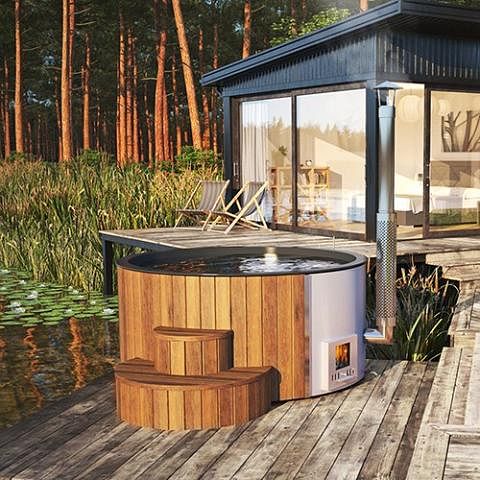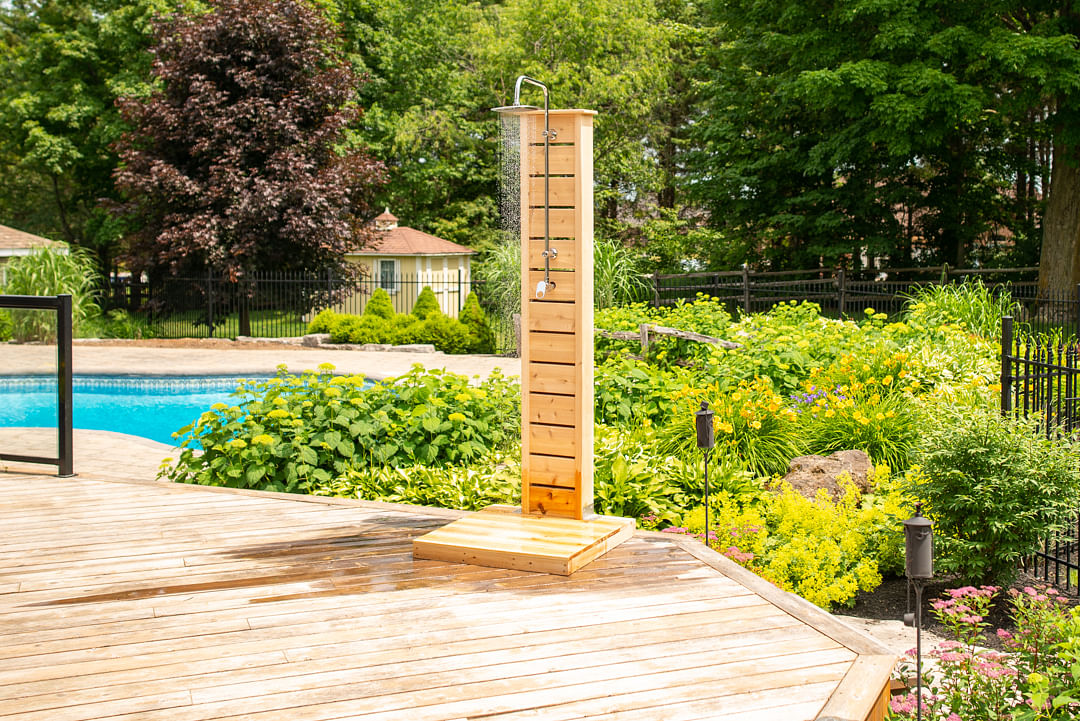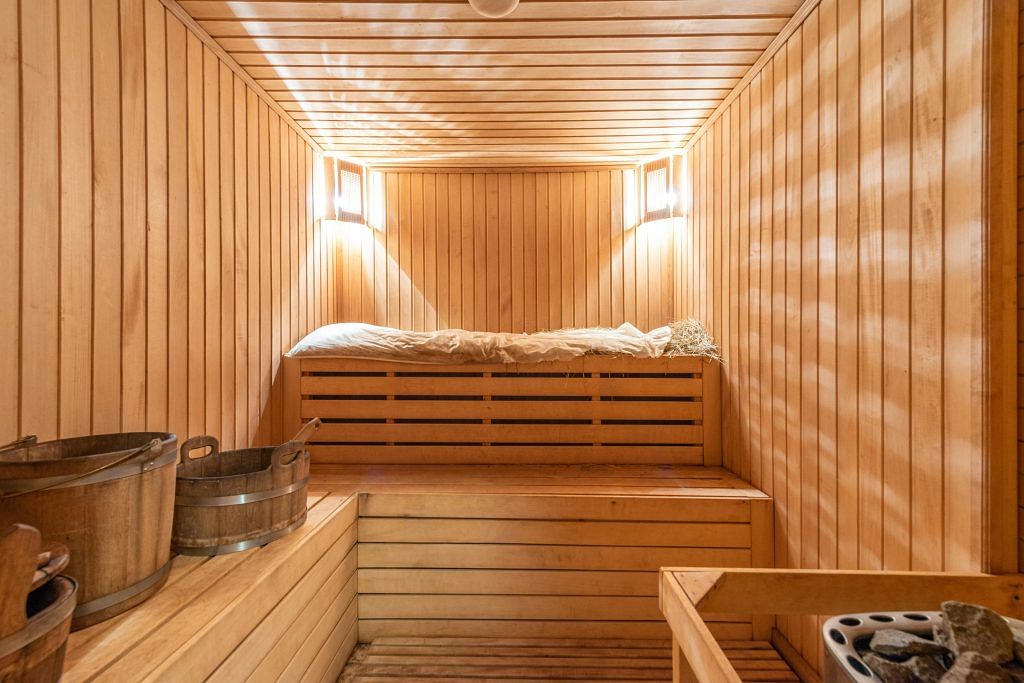Sauna
Infrared vs Traditional Saunas: All the Differences Here
Choosing between infrared and traditional saunas is a tough decision because there are so many differences to consider which we will discuss in the page.
Infrared vs Traditional Saunas: How Do They Work?
How do Traditional Saunas Work?
Traditional saunas operate on the principle of convection heating. Electric or wood-fired heaters are used to directly heat rocks or other elements within the sauna cabin. As these elements heat up, they radiate heat into the surrounding air, gradually raising the ambient temperature. This warm air then circulates throughout the sauna, enveloping you in a hot and humid environment. Traditional saunas typically operate at air temperatures ranging from 150°F to 195°F, along with some level of humidity generated from water poured onto the hot rocks. This combination of heat and humidity encourages sweating, promoting relaxation, detoxification, and other potential health benefits.
How do Infrared Saunas Work?
Unlike traditional saunas that heat the air, infrared saunas utilize invisible light waves to directly penetrate your skin and heat your body at a cellular level. These light waves fall within a specific range of the infrared spectrum, often referred to as “far-infrared.” This type of infrared light is readily absorbed by your body tissues, causing a gentle and deep warming sensation. The increased heat promotes sweating, similar to a traditional sauna, but infrared saunas often operate at lower air temperatures (typically 110°F to 130°F) compared to traditional saunas (150°F to 195°F). This allows you to experience the therapeutic benefits of heat without feeling overwhelmed by the intense heat and humidity common in traditional saunas.
|
Feature |
Traditional Sauna |
Infrared Sauna |
|
Heat Source |
Electric or wood-fired heaters |
Infrared light panels |
|
Heating Method |
Convection heating |
Direct heat penetration |
|
What Gets Heated |
Air inside the cabin |
Your body at a cellular level |
|
Operating Temperature |
150°F to 195°F |
110°F to 130°F |
|
Humidity |
Moderate to high (water poured on hot rocks) |
Low (dry heat) |
|
Sweating Mechanism |
Indirect; sweat due to hot and humid environment |
Direct; sweat due to increased body temperature |
Infrared vs Traditional Saunas Health Benefits
Traditional Saunas Health Benefits
Traditional saunas have been a staple in wellness practices for centuries, and for good reason. The combination of hot air and moderate humidity creates a deeply relaxing environment, promoting stress reduction and muscle tension relief. Additionally, the intense sweating induced by traditional saunas may offer a range of potential health benefits. Sweating helps eliminate toxins and impurities from the body, and some studies suggest it may also improve circulation and boost the immune system. Traditional saunas may also offer temporary pain relief for those suffering from muscle aches and stiffness. Research is ongoing to explore the full extent of traditional saunas’ health benefits, but their reputation as a haven for relaxation and potential overall well-being is well-established.
Infrared Saunas Health Benefits
Infrared saunas utilize a different approach to achieve therapeutic benefits. By directly heating your body at a cellular level with infrared light waves, they offer a unique experience compared to traditional saunas. Proponents of infrared saunas claim several potential health benefits associated with this deeper heat penetration. Sweating is still a key aspect, but it may occur at lower air temperatures (often more comfortable for some users).
Some studies suggest infrared saunas may promote even deeper detoxification and increased calorie burning compared to traditional saunas (although the evidence for significant calorie burning is limited). Additionally, the deeper heat may offer targeted pain relief for sore muscles and joints. Improved circulation and potential benefits for skin health are also cited as advantages of infrared saunas.
Important to remember: While research is ongoing, the long-term health benefits of both traditional and infrared saunas require further investigation. If you have any underlying health conditions, consult with your doctor before using a sauna of any type.
|
Feature |
Traditional Sauna |
Infrared Sauna |
|
Heat Type |
Hot and humid air |
Direct heat penetration (cellular level) |
|
Operating Temperature |
150°F to 195°F |
110°F to 130°F |
|
Sweat Mechanism |
Indirect; sweat due to hot and humid environment |
Direct; sweat due to increased body temperature |
|
Potential Benefits |
Relaxation, stress reduction, muscle tension relief, detoxification, improved circulation, immune system boost, pain relief |
Relaxation, stress reduction, muscle tension relief, detoxification (potentially deeper), increased calorie burning (limited evidence), targeted pain relief, improved circulation, potential skin benefits |
Infrared vs Traditional Saunas: Which is Easier and More Comfortable to Use?
Traditional Saunas
Traditional saunas offer a spacious and social environment, perfect for those who enjoy a communal sauna experience. The hot and humid air can feel very relaxing and cleansing to some users. Additionally, traditional saunas often provide a more intense sweat, which some find particularly beneficial.
However, there are also some comfort factors to consider with traditional saunas. The higher air temperatures (150°F to 195°F) may be too intense for some users, especially those new to saunas. Additionally, the humidity can feel stuffy or overwhelming, especially for those with respiratory sensitivities. The longer heat-up time (typically 30-45 minutes) might also be a drawback for those looking for a quick and convenient sauna experience.
Infrared Saunas
Infrared saunas offer a more personalized and potentially more comfortable sauna experience. The lower air temperatures (110°F to 130°F) are often preferred by users who find traditional saunas too hot. Additionally, the dry heat feels less stuffy and may be more suitable for those with respiratory issues. The quicker heat-up time (typically 10-15 minutes) allows for a more convenient sauna session, making it easier to incorporate into a busy schedule.
However, some users might find the smaller cabin size of infrared saunas less appealing, especially if a social sauna experience is desired. The lower air temperature might also translate to a less intense sweat for some.
|
Feature |
Traditional Sauna |
Infrared Sauna |
|
Environment |
Spacious, potentially social |
More compact, personal |
|
Heat Type |
Hot and humid air |
Dry heat |
|
Operating Temperature |
150°F to 195°F |
110°F to 130°F |
|
Sweat Experience |
More intense sweat |
Less intense sweat for some |
|
Heat-Up Time |
30-45 minutes |
10-15 minutes |
|
Potential Drawbacks |
High temperature might be too intense, humidity can feel stuffy |
Smaller cabin size, less intense sweat for some pen_spark |
Infrared vs Traditional Saunas: Which is Better for Your Home?
Traditional Saunas
Traditional saunas can be a fantastic addition to your home wellness routine. Here’s a breakdown of some key factors to consider:
- Spaciousness: Traditional saunas typically offer more space than infrared saunas, making them ideal for those who enjoy a more social sauna experience. You can relax with friends or family, creating a shared spa-like atmosphere.
- Traditional Experience: Traditional saunas provide the classic sauna experience many people enjoy. The hot and humid air can feel very relaxing and cleansing, offering a sense of rejuvenation after a long day.
- Installation: Traditional saunas might require professional installation, especially for wood-fired models. This can add to the initial cost and potentially limit placement options in your home.
- Ventilation: Traditional saunas require proper ventilation to remove moisture and maintain a comfortable environment. You’ll need to factor in ventilation needs during the planning and installation process.
- Energy Consumption: Traditional saunas, particularly electric models, tend to have higher energy consumption compared to infrared saunas due to the longer heat-up time and need to maintain a hot and humid environment.
Overall, traditional saunas offer a spacious, social, and classic sauna experience. However, installation, ventilation, and potentially higher energy consumption are essential factors to consider for your home environment.
Infrared Saunas
Infrared saunas offer a compelling option for home use, thanks to their unique features:
- Compact Size: Infrared saunas are generally more compact than traditional saunas. This makes them ideal for smaller homes or apartments where space might be limited.
- Quick Heat-Up: Infrared saunas heat up much faster than traditional saunas (typically 10-15 minutes compared to 30-45 minutes). This allows for a more convenient sauna experience, letting you enjoy a quick and efficient session.
- Easy Installation: Many infrared saunas are pre-fabricated and require minimal installation compared to traditional saunas. This translates to lower installation costs and greater flexibility in placement within your home.
- Lower Energy Consumption: Infrared saunas generally have lower energy consumption than traditional saunas. The quicker heat-up time and lower operating temperature contribute to this advantage.
- Dry Heat: The dry heat of infrared saunas might be more comfortable for some users, especially those with respiratory sensitivities who might find the humidity of traditional saunas overwhelming.
However, there are a few things to keep in mind with infrared saunas for your home:
- Smaller Cabin Size: As mentioned earlier, the compact size can be a benefit for space, but it may also limit the social aspect of a sauna experience.
- Less Intense Sweat: The lower air temperature in infrared saunas can result in a less intense sweat for some users compared to traditional saunas.
|
Feature |
Traditional Sauna |
Infrared Sauna |
|
Space Requirement |
Larger, more spacious |
Compact, space-saving |
|
Social Experience |
Ideal for shared sauna sessions |
More suited for individual use |
|
Heat Type |
Hot and humid air |
Dry heat |
|
Installation |
May require professional installation |
Often pre-fabricated, easier installation |
|
Ventilation |
Requires proper ventilation |
Less demanding on ventilation |
|
Energy Consumption |
Higher energy consumption |
Lower energy consumption |
|
Heat-Up Time |
Slower heat-up time (30-45 minutes) |
Quicker heat-up time (10-15 minutes) |
Click here to see all our indoor saunas
Infrared vs Traditional Saunas: Which is Better for Your Outdoor?
Traditional Saunas
Traditional saunas can create a unique and potentially rewarding outdoor experience. Here’s a breakdown of some key factors to weigh:
- Spaciousness and Social Setting: Similar to indoor use, traditional outdoor saunas offer a spacious environment perfect for shared relaxation with friends and family. It can become a social hub in your backyard, fostering connection and enjoyment of the outdoors.
- Traditional Experience: You can recreate the classic sauna experience in a beautiful outdoor setting. The hot and humid air can feel particularly refreshing on a cool evening, offering a unique way to connect with nature.
- Weatherproofing: Traditional outdoor saunas require careful construction with weatherproof materials to withstand the elements. Wood needs to be treated for outdoor use, and proper ventilation is still crucial to prevent moisture buildup.
- Maintenance: Compared to infrared saunas, traditional outdoor saunas might require more ongoing maintenance due to exposure to weather conditions. Regular cleaning and inspections are essential to ensure long-lasting performance.
- Heat-Up Time: The longer heat-up time (30-45 minutes) of traditional saunas might be less convenient for outdoor use, especially if you’re looking for a quick and spontaneous sauna session.
Overall, traditional outdoor saunas offer a spacious environment and a classic sauna experience in a beautiful setting. However, weatherproofing, maintenance, and longer heat-up times require careful consideration for successful outdoor use.
Infrared Saunas
Infrared saunas offer several advantages for outdoor use:
- Portability: Many infrared saunas are lighter and more portable than traditional saunas. This makes them easier to place on your patio or deck, or even consider a mobile option for camping trips or glamping adventures.
- Quick Heat-Up: The quicker heat-up time (10-15 minutes) of infrared saunas is particularly beneficial outdoors. You can enjoy a warm and therapeutic sauna session without waiting a long time for it to reach the desired temperature, especially if dealing with cooler outdoor environments.
- Lower Maintenance: Infrared saunas generally require less maintenance compared to traditional outdoor saunas. The lack of intense heat and humidity reduces concerns about warping or mold growth.
- Energy Efficiency: The lower energy consumption of infrared saunas translates to lower operating costs, potentially saving you money on electricity bills, especially if you plan on using your outdoor sauna frequently.
However, there are a few things to consider with infrared saunas for outdoor use:
- Smaller Cabin Size: As with indoor use, the compact size of infrared saunas may limit the social aspect of an outdoor sauna experience.
- Weather Considerations: While infrared saunas require less maintenance than traditional saunas outdoors, they still need some level of protection from the elements. Consider placing them in a covered patio area or using a weatherproof shelter to extend their lifespan.
|
Feature |
Traditional Sauna |
Infrared Sauna |
|
Space Requirement |
Larger, more spacious |
Compact, space-saving, potentially portable |
|
Social Experience |
Ideal for shared sauna sessions |
More suited for individual use |
|
Heat Type |
Hot and humid air |
Dry heat |
|
Weatherproofing |
Requires careful construction with weatherproof materials |
Less demanding on weatherproofing |
|
Maintenance |
More ongoing maintenance due to weather exposure |
Lower maintenance needs |
|
Heat-Up Time |
Slower heat-up time (30-45 minutes) |
Quicker heat-up time (10-15 minutes) |
|
Portability |
Less portable |
More portable |
|
Energy Efficiency |
Higher energy consumption |
Lower energy consumption pen_spark |
Click here to see all our outdoor saunas
Let’s Summarize
|
Feature |
Traditional Sauna |
Infrared Sauna |
|
Heat Type |
Hot and humid air |
Direct heat penetration (cellular level) |
|
Temperature |
150°F to 195°F |
110°F to 130°F |
|
Sweat Experience |
More intense sweat |
Less intense sweat for some |
|
Comfort |
May feel too hot or stuffy for some |
Drier heat, potentially more comfortable for some |
|
Social Experience |
Spacious, ideal for shared use |
More compact, suited for individual use |
|
Home Installation |
May require professional installation |
Often pre-fabricated, easier installation |
|
Home Ventilation |
Requires proper ventilation |
Less demanding on ventilation |
|
Home Energy Use |
Higher energy consumption |
Lower energy consumption |
|
Home Heat-Up Time |
Slower heat-up time (30-45 minutes) |
Quicker heat-up time (10-15 minutes) |
|
Outdoor Weatherproofing |
Requires careful construction with weatherproof materials |
Less demanding on weatherproofing |
|
Outdoor Maintenance |
More ongoing maintenance |
Lower maintenance needs |
|
Outdoor Heat-Up Time |
Less convenient due to longer heat-up time |
More convenient with quicker heat-up time |
|
Outdoor Portability |
Less portable |
More portable |
|
Overall Cost |
Potentially higher cost (installation, energy use) |
Potentially lower cost (easier installation, lower energy use) |
Choosing Between Traditional and Infrared:
- Consider the experience you desire: Traditional saunas offer a classic hot and humid experience, while infrared saunas provide a drier heat with deeper penetration.
- Think about comfort: If you find high heat or humidity overwhelming, an infrared sauna might be a better choice.
- Space is a factor: Traditional saunas are generally larger, while infrared saunas are more compact. This can impact your home or outdoor setup options.
- Ease of use is important: Infrared saunas often heat up faster and require less maintenance than traditional saunas.
- Budget in mind: Traditional saunas may have a higher overall cost due to installation and potentially higher energy consumption.
By considering these key points, you can choose the sauna type that best suits your needs and preferences.
Click here to see all our infrared saunas
Click here to see all our traditional saunas

